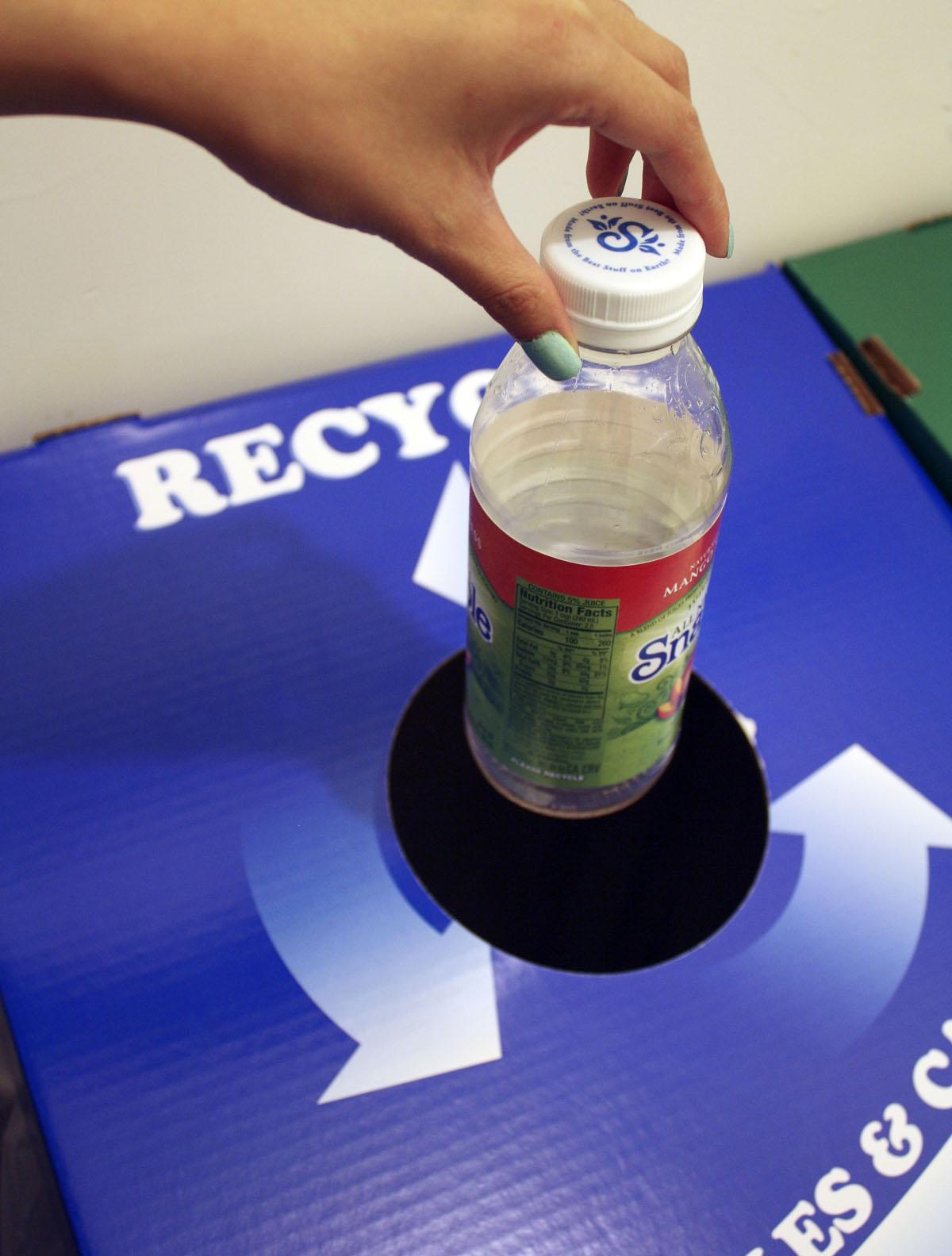Money limits materials that get recycled
Recycling companies are sometimes forced to throw away recyclable materials due to low market demand or insufficient volumes of materials according to a USU recycling and waste material resource manager.
Kevin Phillips, manager of material resources for Recycling and Waste Management, said recycling companies operate as businesses and therefore require profit to survive. No matter how recyclable the product, it must have a resale value in order for the center to initiate the reprocessing cycle.
“Nearly everything in the world can be recycled but having sufficient quantity and having a market for it is of utmost importance,” Phillips said.
He said the USU Recycling Center makes its entire profit on income generated by the sale of recycled products, combined with the money saved by making smaller payments to the landfill.
This means the center can only afford to collect materials that bring an income, and not all recyclable materials bring in money, he added.
“For example, plastic bags,” he said, “we’ve kept them and recycled them and prepared them for the last few years but have not been able to find a source that would take them. It would be cheaper for us to throw them away, than have to ship them to New York or wherever to pay somebody to take them.”
He said just because a product is recyclable, doesn’t mean it’s financially viable to be recycled. Local markets determine the demand, and therefore profitability of a recyclable product, he added.
The market is not the only factor keeping the center from recycling certain usable materials, Phillips said. It also comes down to an issue of volume.
Citing petri dishes as an example, Phillips said there needs to be a high quantity of a product for it to be worth sending away to be recycled.
“We generate a few on this campus every year, but it might just be a couple hundred pounds,” Phillips said. “Is that really enough to worry about keeping them as a separate category? No it’s not. It has to be a volume you can do something about.”
After learning of this procedure, Konrad Hafen, a junior studying wildlife science, said as a for-profit business, it makes sense for the center to discard items it can’t use to an advantage.
“If they can’t make a profit, then I don’t see a reason why they should have to recycle it,” Hafen said, “They have to pay for their operating cost, so it doesn’t make sense for them to lose money because they’re trying to do a good thing.”
Cassandra Lambert, a senior majoring in human resources, said, however, she sees the actions of the center as dishonest and misleading.
“Everybody recycles with the idea that it will be reused again,” Lambert said. “It makes me think, ‘Why recycle if it’s going to be thrown away anyway?'”
A sudden lack of funding can also influence the actions of a given recycling center. According to information provided by the Professional Recyclers of Pennsylvania (PROP), in areas where certain materials have little market value, recycling centers rely on monetary support from outside sources — often the local government. PROP said that after the recession, some recycling centers are experiencing a lack of financial support, as government programs are canceled or cut back.
One center affected by post-recession funding cuts is located in Prescott, Ariz.
According to a press release issued by the Prescott Field Operations department, a three year struggle to find a market for recycled glass in a sand-rich environment, left the city recycling center with several hundred tons of un-crushed glass in storage and an additional 25 tons coming in every month.
The press release stated, “One of the biggest problems is that post-consumer glass is an unwanted commodity that no longer has any value. The city is currently storing 300 tons of un-crushed glass that we are not sure how to manage or process.”
According to the statement, after funding was cut the center had no way to afford the glass it was currently storing, let alone the daily additions.
“Glass is currently costing the City an average of $35,000 to $40,000 per year to collect, pulverize, and to process,” the release said.”With the new bill deregulating commercial refuse collection in the City, the Solid Waste divisions will no longer going to be able to subsidize unprofitable programs such as glass recycling.”
Susan Bishel, public relations coordinator for Weaton, Ill., said Weaton’s local recycling center recently discontinued battery recycling due to a lack of funding.
“The purpose was to recycle batteries — which are classified as hazardous waste — to keep the heavy metals and other toxic substances out of landfills,” Bishel said. “While the program was successful in collecting more than eight tons of batteries, the city is no longer able to fund the program, due to budget cuts.”
Both cities issued press releases to inform their citizens of the changes. Now, when the centers receive discontinued materials, they are thrown away.
Kimberlee Owens, a sophomore studying elementary education, said she is disappointed money has gotten in the way of recycling and maybe more civic participation is the answer to this problem.
“It’s sad to me because I care about the environment and those kinds of things,” Owens said. “I think if there was any way that we could make recycling easier — maybe if we started buying more things that came from recycled things — that would help.”
– brianna.b@aggiemail.usu.edu

